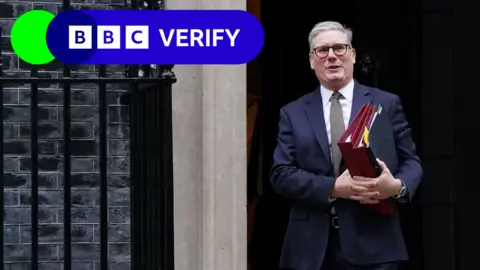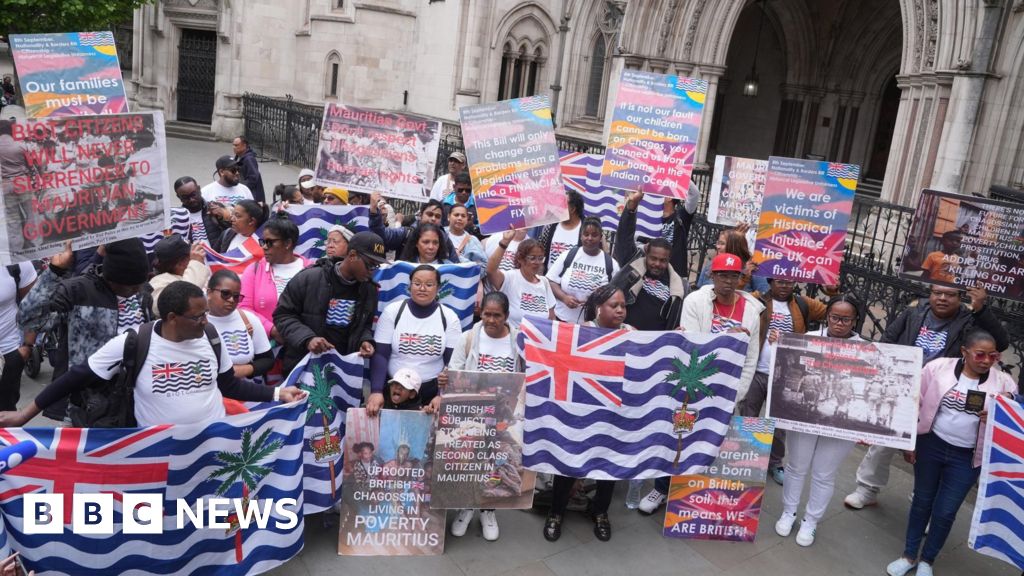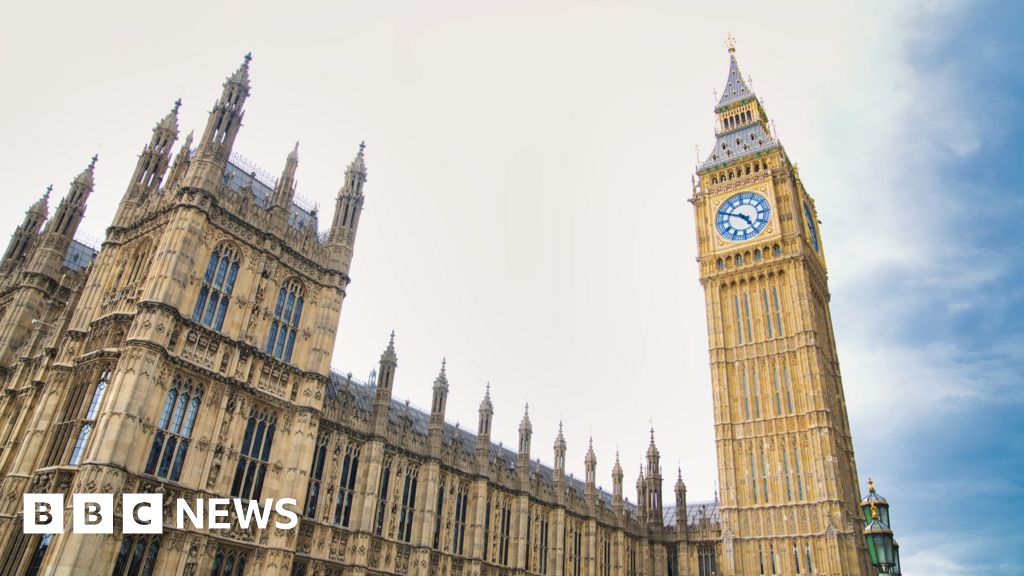ARTICLE AD BOX

 BBC
BBC
Keir Starmer is to outline a “plan for change” on Thursday in a speech in which he will set targets in key areas.
This, the prime minister is expected to say, will allow voters to judge the government’s performance.
We don’t know what all the targets will be. But BBC Verify has looked at the six key areas Starmer is expected to focus on and assessed what the government has already pledged to do, as well as how likely it is to achieve these goals.
The NHS
The NHS in England has an official target that 92% of patients waiting for planned treatment should be seen within 18 weeks of being referred.
Labour's manifesto pledged this and the government is expected to commit to doing so by 2029.
The latest NHS data shows that in September 2024 only 58.5% of operations, or other procedures people were waiting for, occurred within 18 weeks.
When Labour took power in July, the share was 58.8%, so it has barely changed.
The last time the 92% target was hit was in November 2015.


In order to meet this goal, the government has said it wants the NHS in England to get through an additional 40,000 appointments and operations each week.
And to help fund this, Chancellor Rachel Reeves increased the inflation-adjusted day-to-day cash resources of the health department by 3.8% in both 2024-25 and 2025-26 in her Autumn Budget.
However, Matthew Taylor, the chief executive of the NHS Confederation, which represents managers, has warned that achieving the 40,000 appointments and operations target will not be enough, on its own, to hit the broader 92% waiting list target.
“The NHS needs reform, not just ever more activity,” Mr Taylor said.
The economy
Labour is expected to make a new pledge to increase the amount of money that households have.
In October, the Office for Budget Responsibility (OBR), which does the government's forecasts, predicted that real household disposable income (RHDI) per person would rise by around 0.5% per year over this Parliament.


According to calculations by the Resolution Foundation, a think tank focused on living standards, that would be a slightly better performance than the 0.3% average growth in RHDI per person in the previous Parliament.
But it would be worse than every other Parliament for decades.
In its manifesto, Labour pledged to "secure the highest sustained growth in the G7”: that means the UK, the US, Canada, Italy, France, Japan and Germany.
The latest forecasts from the IMF from October suggest that Canada and the US will have stronger average growth than the UK between 2024 and 2029.
However, it should be stressed that these are only forecasts - and forecasts related to economic growth and incomes are subject to considerable uncertainty.
Crime
We do know that the government will re-commit to its manifesto pledge to hire 13,000 additional neighbourhood police officers, special constables and Police Community Support Officers (PCSOs), who work with officers but do not have all the same powers.


Tiff Lynch, the acting national chair of the Police Federation of England and Wales, the staff association for officers, has welcomed the government’s recruitment drive.
But she also warned that morale in the force is low due to real terms pay cuts in recent years and pointed out that in the federation's last survey 22% of respondents said they were planning to leave within the next two years.
Education
The government is expected to pledge to raise the proportion of children in England who are “ready for school” at the age of five, to 75%.
Official data from the Department for Education suggests that in 2023-24, 67.7% of children in England had a “good level of development”.
This is based on teacher assessments of children’s development at age five.
This was up slightly from 67.2% in the previous year.

 PA
PA
The government is in the middle of a major expansion of state-funded childcare.
From September 2025, the government is pledging to deliver 30 hours of government funded childcare a week for under-fives in England, taking on the commitment of the previous government.
However, the Early Years Alliance, which represents nurseries in England, estimates that the increase in employer National Insurance Contributions announced in the Budget will result in additional annual costs averaging more than £18,600 per provider. That is based on a survey of its members.
The childcare sector warns that, without extra funding to make up for the tax rise, nurseries might withdraw from the free childcare scheme, or some could go out of business.
Housebuilding
Also in line with Labour’s manifesto, Starmer is expected to recommit to building 1.5 million net additional dwellings in England over the course of the Parliament.
At a constant annual rate, that would equate to 300,000 per year,


The most recent official data shows that 221,070 net additional dwellings were delivered in 2023-24, a decline of 6% on the previous year.
The government is bringing in new housing targets for local councils in England, which the previous administration dropped and is reforming planning laws to try to accelerate building.
But many housing experts remain sceptical about the feasibility of Labour’s target given the lack of affordability of new housing, which has put off many buyers and deterred private developers from investing.
Official data also shows that the number of housing projects given the go-ahead by councils in England reached a record low in the final months of the last government, mainly because of a decline in applications from builders.
Clean power
As part of its commitment to substantially decarbonise the UK’s electricity grid by 2030, the government is expected to pledge, in line with its manifesto, to triple the UK’s solar power capacity, double onshore wind capacity and quadruple offshore wind capacity.


The previous government presided over a an auction for offshore wind contracts in September 2023 which attracted no bids for new projects - blamed on the setting of the price too low.
The new administration's auction in September 2024 resulted in nine new contracts being signed.
But energy experts have warned there would need to be a significant increase in capacity in next year’s bidding process. This is likely to be the final chance for new projects to be built in time to generate electricity for 2030.
The National Energy System Operator (NESO), the government’s independent system planner and operator for the energy transition, recently concluded that “it is possible to build, connect and operate a clean power system for Great Britain by 2030, while maintaining security of supply".
However, NESO added that achieving this would be “at the limit of what is feasible”.



 6 months ago
33
6 months ago
33








 English (US) ·
English (US) ·